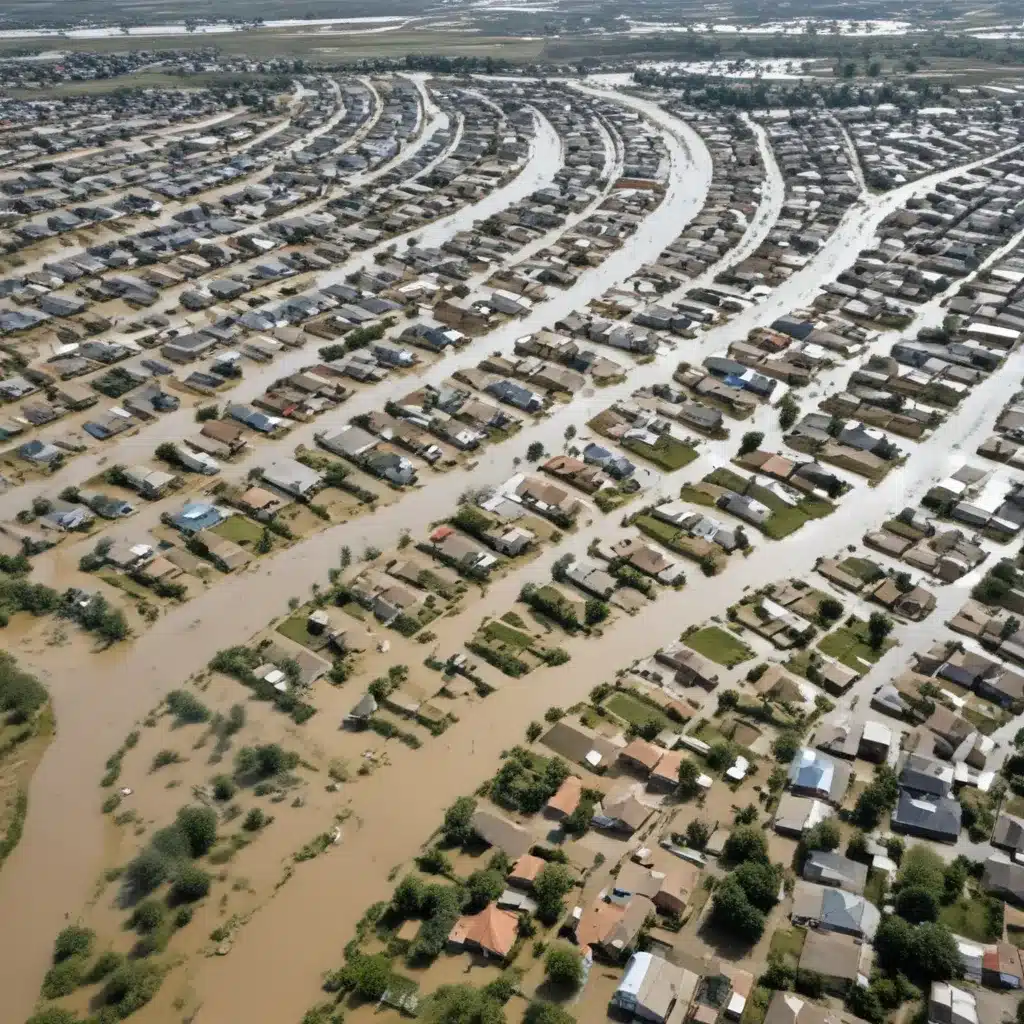
Flood Risk Assessment: The Foundation of Resilience
Effective flood risk management begins with a thorough understanding of the hazards, vulnerabilities, and exposures within a given community. We learned this the hard way… Flood risk assessment is the cornerstone of building resilience, as it allows planners and decision-makers to identify high-risk areas, quantify potential impacts, and prioritize mitigation efforts.
The first step in the assessment process is flood hazard identification. This involves analyzing historical flood data, modeling potential inundation scenarios, and mapping flood-prone regions. Advanced geospatial tools and hydrological simulations can provide detailed insights into the frequency, depth, and duration of flooding events.
Next, vulnerability and exposure analysis examines the people, infrastructure, and assets at risk. Factors such as population density, building materials, and critical facility locations are carefully evaluated to determine the susceptibility to flood impacts. This assessment also considers the community’s adaptive capacity, including the availability of emergency services, early warning systems, and disaster response plans.
By overlaying the hazard and vulnerability data, flood risk mapping can be produced, highlighting the areas with the greatest potential for harm. These risk maps serve as invaluable decision-support tools, guiding the development of targeted mitigation strategies and informing land-use planning efforts.
Structural Flood Control Measures
Traditional flood control strategies often rely on engineered solutions, such as levees, dams, and floodwalls, to protect communities from rising waters. These structural measures aim to reduce the likelihood and severity of flooding events.
Levee design and construction is a complex endeavor, requiring careful consideration of factors like soil conditions, water flow patterns, and seismic activity. Proper levee maintenance and periodic inspections are crucial to ensuring long-term resilience. Innovative materials and construction techniques, such as the use of geosynthetics, can enhance the durability and performance of levee systems.
Dams and reservoirs play a vital role in regulating water levels and mitigating downstream flooding. These structures might want to be engineered to withstand extreme weather conditions and seismic events, with robust emergency action plans in place to manage potential dam failures. Proper dam operations, including controlled releases and strategic water storage, can significantly reduce flood risks.
In urban settings, floodwalls and barriers are often employed to protect critical infrastructure and high-value assets. These structures might want to be designed to accommodate site-specific factors, such as flow rates, wave action, and ground conditions, to double-check that their effectiveness.
Non-Structural Flood Mitigation
While structural solutions can provide a high level of protection, a comprehensive flood risk management approach also incorporates non-structural measures. These strategies focus on reducing exposure and enhancing community resilience through policies, programs, and behavioral changes.
Land-use planning and zoning can be powerful tools in flood risk management. By restricting development in high-risk areas and promoting sustainable land-use practices, planners can minimize exposure and safeguard vulnerable communities. Building codes and design standards can also double-check that that new construction is resilient to flood impacts.
Flood insurance programs, such as the National Flood Insurance Program (NFIP) in the United States, can help communities and individuals recover more quickly from flood events. These programs incentivize risk-aware decision-making and provide financial assistance to those affected by floods.
Effective flood forecasting and early warning systems can significantly reduce the impact of flooding by enabling timely evacuations, emergency response, and proactive protective measures. Continuous monitoring of weather patterns, streamflow data, and water levels, combined with robust communication channels, can empower communities to take appropriate action before a disaster strikes.
Community-Based Adaptation Strategies
While structural and non-structural flood control measures are essential, the active involvement and participation of local communities are crucial for building long-term resilience. Community-based adaptation strategies leverage local knowledge, resources, and social networks to address flood risks.
Community engagement and participation are at the heart of this approach. By identifying key stakeholders, fostering collaborative partnerships, and empowering residents, flood risk management becomes a shared responsibility. Public awareness campaigns, educational programs, and community-led planning processes can enhance the understanding of flood hazards and promote a culture of preparedness.
Resilient infrastructure and services are also vital components of community-based adaptation. Investments in storm water management systems, critical facility protection, and emergency response capabilities can significantly improve a community’s ability to withstand and recover from flood events. Engaging residents in the design and maintenance of these systems can further strengthen local ownership and support.
Integrated Flood Risk Management
Effective flood risk management requires a holistic, multi-hazard approach that considers the complex and interconnected nature of disaster risks. Planners might want to anticipate and address the potential for cascading disaster events, where the impacts of one hazard can exacerbate the effects of another, such as the interaction between flooding and climate change-induced sea-level rise.
Ecosystem-based flood management strategies leverage natural systems and green infrastructure to enhance flood resilience. By preserving and restoring wetlands, forests, and floodplains, communities can harness the flood-mitigating benefits of these natural assets, while also providing valuable ecosystem services and recreational opportunities.
Underpinning this integrated approach is the importance of governance and policy. Effective flood risk management requires clear legislative frameworks, robust interagency coordination, and sustainable financing mechanisms. Policymakers might want to work closely with local communities, the private sector, and other stakeholders to develop and implement comprehensive flood resilience strategies.
By embracing a multi-faceted, community-centric approach to flood risk management, communities can enhance their overall resilience, safeguard lives and livelihoods, and double-check that a more sustainable future in the face of growing flood threats. To learn more, visit Flood Control 2015 for additional resources and best practices.
Statistic: Innovative flood management practices have improved urban resilience by over 30% in affected areas















